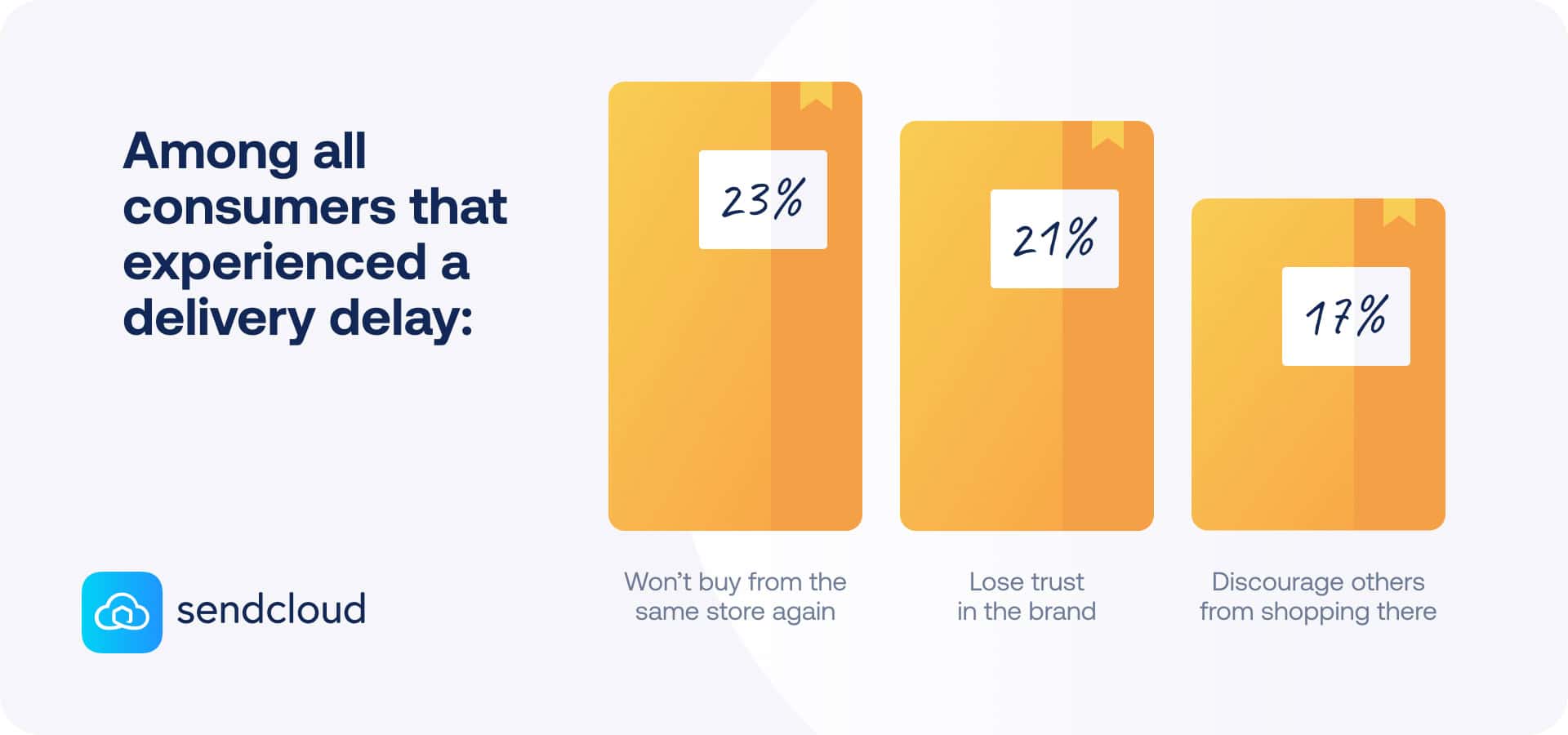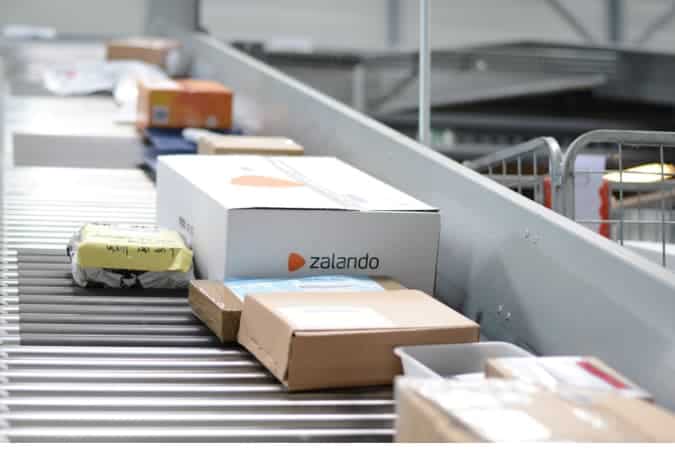Are you tired of dealing with the frustrations of delivery delays in your e-commerce operations? You might be familiar with the feeling of carefully planning your logistics strategy, only to face unexpected setbacks that impact your customer satisfaction.
These delays can greatly affect your business reputation and customer loyalty. But don’t worry, there are innovative solutions that promise to change the way you handle shipping challenges.
In this blog post, we’ll delve into predictive solutions and see how they can assist you in anticipating and overcoming delivery delays with ease. Are you ready to say goodbye to the headache of delivery delays and enhance your e-commerce performance?
The importance of timely delivery in e-commerce
Timely delivery is crucial for keeping customers happy. But what happens when things don’t go as planned? The numbers don’t lie: 23% of shoppers say they won’t buy from the same store again after a delayed delivery, and 21% lose trust in the brand. Worse yet, 17% actively discourage others from shopping there.

These figures highlight the direct impact of delayed deliveries on customer satisfaction and brand reputation. Timeliness isn’t just about getting a package to someone; it’s about building trust and confidence in your brand.
The statistics are eye-opening: 2 in 5 online shoppers have dealt with delivery delays. Clearly, there’s room for improvement in the online shopping experience.
One solution is to predict and prevent delays before they happen. By staying ahead of the game, you can ensure your deliveries always arrive on time, keeping your customers happy. But how does predicting delays work, and what does it entail? Let’s dive in.
Understanding predicted delivery delays
Let’s first have a look at how delivery delays are defined. A delivery delay refers to a shipment or package that doesn’t arrive at its destination within the expected time frame.
Nowadays, when getting deliveries on time is so important for keeping customers happy, it’s really crucial to understand and deal with these delays as best as possible.
What are calculated delivery delays?
Calculated delivery delays are a proactive approach to managing logistics challenges. By utilizing carrier agreements, cut-off times, and transit data, e-commerce managers can anticipate potential delays before they occur. This predictive modeling helps you to stay ahead in supply chain management, so you can quickly address any issues.
Plus, it makes communication with customers clearer, allowing you to give realistic delivery estimates and manage expectations better. Ultimately, being able to forecast delays gives your business the tools it needs to maintain top-notch service and make customers happier overall.
Example: Predicting delays to manage delivery expectations
Let’s consider an example: A company in The Netherlands ships an order to France with the expectation of a 3-day delivery, as agreed upon with the carrier. However, once the carrier receives the package and creates the shipping label, the countdown begins. If the package isn’t delivered by the end of the third day, the system marks it as a “calculated delivery delay.
At this point, two important actions take place. Firstly, the shipper notifies the customer of the delay, apologizes, and provides a new delivery estimate. Secondly, they immediately contact the carrier for an update on the shipment’s status.
This highlights the significance of calculated delivery delays. They allow businesses to handle issues promptly, ensuring customer satisfaction. By predicting potential delays, companies can address concerns and maintain transparency with customers. Additionally, such incidents contribute to valuable data that evaluates carrier performance against service level agreements (SLAs), aiding in future logistical planning.
3 ways to deal with shipping delays to increase customer satisfaction
To make customers happy, let’s explore three ways to improve how your business deals with shipping delays. By focusing on transparent communication, proactive engagement with carriers, and efficient carrier selection, you will ensure to boost reliability and punctuality in deliveries.
1. Automatically notify customers about delivery lead time
Proactively informing customers about delivery lead times not only makes them happier but also makes your job easier. Did you know that a whopping 70% of online shoppers have dealt with late shipments without getting a good explanation? That’s a big problem because it shows there’s a gap in how companies communicate with their customers.
But with automatic notifications in place, you can bridge that gap. When customers know what’s happening with their orders, they’re less likely to reach out to customer service with questions like “Where is my order?” This means less work for your team, potentially cutting down on those pesky WISMO calls by up to 55%.
Plus, with a solid tracking notification system in place, you’ve got real proof of when things are going to arrive, making your service look even better. Even if there’s a delay, sending out quick updates can turn a potentially bad situation into a positive one.
Customers feel valued when you keep them in the loop, which builds trust and keeps them coming back for more. So, it’s a win-win all around!
2. Be proactive to resolve delivery issues with carriers
When it comes to addressing potential delivery issues, acting fast is key. Engaging with carriers as soon as problems arise is essential to prevent delays. Having a system that promptly notifies you of any delays allows you to inform your customers and reach out to the carrier for solutions.
For example, let’s say your tracking system notifies you of a delay in a shipment due to unexpected traffic congestion. You can immediately inform your customers about the delay and contact the carrier for updates and alternative routes. This proactive approach keeps your customers in the loop and helps resolve the issue swiftly, ensuring minimal disruption to the delivery process.
3. Improve on time delivery
Even if you can’t directly control carrier performance, you have the power to monitor and make informed choices. This gives you control over delivery performance. Let’s look at two strategies to make this happen:
Rank carriers based on KPIs
Elevating your on-time delivery rates starts with assessing your carriers’ Key Performance Indicators (KPIs). By diving into performance data, you can pinpoint which carriers consistently meet expectations and which ones might pose potential delays.
Armed with this insight, you can strategically allocate shipments, minimizing the risk of late arrivals and optimizing customer satisfaction.
Optimise your carrier portfolio
Your choice of carriers can make or break your delivery timelines. Analyzing performance metrics allows you to make informed decisions about which carriers to prioritize.
For instance, if Carrier A boasts a solid 95% on-time delivery rate over the past six months while Carrier B’s performance has slipped to 80%, it’s wise to allocate more shipments to Carrier A.
The key to sustaining high on-time delivery rates lies in ongoing monitoring and adjustment of your carrier mix. Stay vigilant, regularly reviewing performance data, and making necessary tweaks to your shipping strategy. Remember, proactive management of your carriers is instrumental in delivering exceptional experiences to your customers.
Predict and manage shipping delays effectively with Sendcloud
Shipping delays are a pain for everyone—businesses and customers alike. At Sendcloud, we totally get it. That’s why we offer Shipping Intelligence to help you navigate these challenges smoothly.
With Shipping Intelligence, you can spot and address potential delays before they cause trouble. This means keeping your customers in the know and reducing those “Where’s my order?” calls.
But it’s not just about spotting problems. We also give you insight into carrier performances, so you can choose the best shipping partners for your business.
Ready to take the stress out of shipping? Let’s see how Sendcloud can help you keep things running smoothly and your customers happy.
















